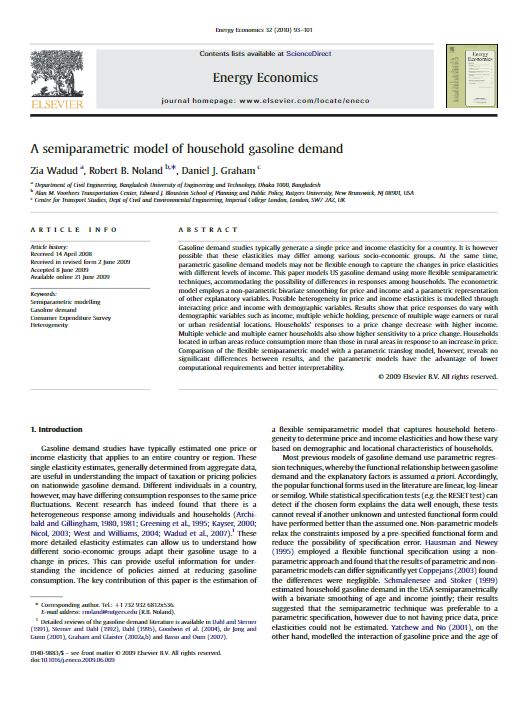Wadud, Z., Noland, R.B. & Graham, D.J. 2010, “A Semiparametric Model of Household Gasoline Demand,” Energy Economics, vol. 32, no. 1, pp. 93-101
Abstract
Gasoline demand studies typically generate a single price and income elasticity for a country. It is however possible that these elasticities may differ among various socio-economic groups. At the same time, parametric gasoline demand models may not be flexible enough to capture the changes in price elasticities with different levels of income. This paper models US gasoline demand using more flexible semiparametric techniques, accommodating the possibility of differences in responses among households. The econometric model employs a non-parametric bivariate smoothing for price and income and a parametric representation of other explanatory variables. Possible heterogeneity in price and income elasticities is modelled through interacting price and income with demographic variables. Results show that price responses do vary with demographic variables such as income, multiple vehicle holding, presence of multiple wage earners or rural or urban residential locations. Households’ responses to a price change decrease with higher income. Multiple vehicle and multiple earner households also show higher sensitivity to a price change. Households located in urban areas reduce consumption more than those in rural areas in response to an increase in price. Comparison of the flexible semiparametric model with a parametric translog model, however, reveals no significant differences between results, and the parametric models have the advantage of lower computational requirements and better interpretability.
